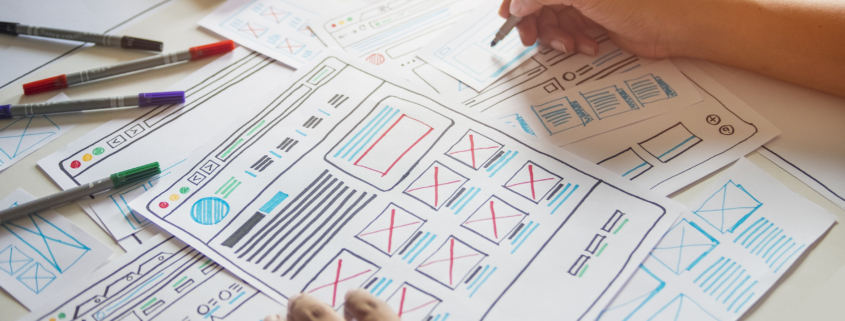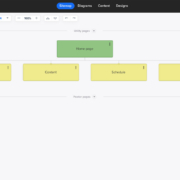Landing Page Best Practices – How To Make People Convert More
Your business needs a high-converting page somewhere on your site – for sure. But, once you get the content and CTAs and all the great design implemented on your page, how do you know whether or not it’s converting as highly as it could be?
Testing and improving your campaign components helps you understand the highs and lows in site traffic, as well as conversion rates. And, if you’re not looking at your top landing pages every month (or AT LEAST every quarter), you’re likely losing lead opportunities.
Did you know that 52% of companies test their pages to increase conversions? (We honestly thought that number would be higher.)
Interested in learning more? In this guide, we’ll show you what high-converting pages look like, what market research says and how to increase your conversions on any page of your website. Please keep in mind that while this deep dive can certainly help you improve your website, it’s best to work with a web development company (and set up reports to track performance) for the actual design of these pages.
First – How are Your Top Landing Pages Converting?
Conversions happen when a visitor expresses interest in one of your pages, typically after seeing one of the following:
- Display ad or banner ad
- Google text search ad
- Search engine result
- Social media ad or post
- Guest blog post or referral link
- Video ad
It’s important to look at the relationship between your traffic sources and your website’s pages in order to attribute conversions with the right audiences before thinking about conversion rate optimization.
One More Thing…
If you haven’t already looked at your latest traffic and keyword reports, you should pull those bad boys and check the numbers. Specifically, you’re looking for these metrics:
- Conversion rate
- Total impressions
- Click-through rate (CTR)
- Bounce rate
- Dwell time
These metrics directly relate to the success of your page. If you are getting conversions, impressions and clicks, then it’s obviously working.
But, what does it look like for the long-term? And, are you missing out on thousands of opportunities by not fixing something small on your form? These are questions that can be answered through conversion rate optimization.
What is Conversion Rate Optimization (CRO)?
The practices and tactics used to improve a page’s conversion rate is known as CRO, and techniques change depending on the conversion type. No matter what, though, a conversion is defined as any time a visitor takes on an action that you wanted them to take. Therefore, conversion types are tied directly to your business goals.
Various conversions include the following:
- Online sales conversions
- Lead captures or form completions
- Sign-ups/email acquisition
- Shares and likes
- Clicks on a URL
- Event RSVPs or webinar sign-ups
- New subscribers and follows
- Downloads and app install
Basic Conversion Page Strategies to Try with CRO
- Looking for leads? Try an inbound marketing page.
- Looking for sales? Focus on mobile UX and social media shopping.
- Looking for subscribers or followers? Challenge your visitors to a contest or offer a giveaway.
If you search any one of these strategies, you’ll instantly see a ton of examples that show you how to develop the front end of your site, including forms, animated timers and so forth. However, it’s also about the content on the page, including the messaging, images and videos.
Conversion rate optimization typically involves studying the metrics of your top pages and comparing them to other high traffic content (as well as studying other competitor campaigns and their pages). If you spot certain elements that make it easier for a visitor to convert, then why not test against your top-performing pages?
This is why it’s important to look at your conversion tracking, top page reports, analyze your traffic reports and use heat maps or click maps to study what’s working. (Information is provided below on how to set up conversion tracking and reporting.)
What Do Top Conversion Pages Look Like
When all elements align, a high-converting page is born. There are several types of conversion pages. Some are made to collect lead information and may offer an incentive, while others are made to sell with a quick checkout process.
Web development services make quick work of setting up different conversion pages to test if you need help designing and executing these campaigns.
Here’s a look at some of the different page types and the strategy behind them:
Text-Based, Fast-Loading Pages
While most marketers are stuck on using videos or images, text-based marketers choose bold headlines, interesting fonts, complementary colors, and tight messaging to direct users to what they want them to do.
These pages are typically built for speed and mobile experiences and directly deliver on what the headline promises.
Squeeze or Lead Capture Page
When a campaign offers a discount or downloadable e-book for sign-up, it’s called a squeeze page. These work well for building your email list, but you want to come up with a free product, discount or other smart incentives that will make your audience want to sign up.
Click-Through to Purchase
These pages are built around a specific product. Typically, there are multiple bullet points to explain why you should buy the product and a big discount to do so. The customer is pointed to a buy button that takes them to checkout.
These pages may work better when the social proof is included, such as testimonials, videos, and images of customers enjoying the product.
Immersive Interactive UX Pages
Interactive UX pages are perfect for mobile phone users as they often include games, contests or animated elements that react on-tap. These work well as viral content and provide a wonderful way to engage with your audience.
However, they can be difficult and expensive to create, so the effort has to match the result. If the experience doesn’t generate a viral response, you may not get the conversions you seek.
Video-Based Pages
Sometimes everything needs to be said in motion with the sound on. People don’t understand how great a product or service is unless they can see how it works. Video testimonials, demonstrations, and well-executed promo videos can generate a huge response on social media as well.
These are some the main types, but there are also a few other strategies to look into including:
- SEO mini-sites
- Product demonstrations
- Live chat pages
Should You Use Your Home Page as a Landing Page?
We HIGHLY recommend testing your home page against your conversion pages to see what works best. However, home pages typically have too many distractions, as well as a huge navigation menu.
Conversion pages are simplified to achieve a single action. Everything pushes the visitor towards that conversion. Home pages may have several goals, and while a great promotion above the header will AID a campaign, higher click-throughs and conversions typically come from customized pages.
Guide to Increasing Conversion Rates
When you need to improve traffic, it’s best to start by setting up an A/B/C test. Compare your changes to the original and see what really worked for conversions. Within a few days, a test page will either perform or fall flat.
The following expert tips come from our experience developing pages for all kinds of industries and goals. Data from those shows us that the following is true:
1. Less Than 3 Fields and Quick Checkouts
People don’t want to spend time on a form, because you’re (probably) not promising them the elixir of life for completing it. This is why you have to be careful with your visitor’s attention span and patience.
Conversion pages with over 3 fields typically have higher bounce rates and abandons…but there’s an important consideration. Value. Certain forms that promise a great discount or giveaway may still get a high conversion rate if visitors are motivated by the value.
For Online Stores and Sales
Quick checkouts refer to a 1- or 2-click checkout process that is easy to navigate on mobile. We suggest looking at social media store and checkout options for today’s mobile customers. When combined with a social media campaign and targeting, your connect conversion pages may convert instantly from Instagram or Pinterest.
2. Guarantee Refunds on Online Purchases
When people buy online, they look for words like “moneyback guarantee,” “satisfaction guaranteed,” and “guaranteed return policy.” These words increase sales by so much that it will make up for any returns that you might receive.
This is a sign of confidence in your product quality, brand and customer service…all things that customers want to see when shopping online.
3. Change Up Your Verbiage
When writing your headlines, subtitles, and call-to-actions, active voice is best. You should always try new messaging with A/B split testing anyways. This may include changing the headline or simply adding a new line of text, like “Guaranteed Same-Day Shipping.”
4. Display Testimonials Prominently
Everyone shopping online wants to know that your business is legitimate and worth the cost. Many shoppers are looking for deals and want to try new brands, but they look for social proof first.
Testimonials from clients or customers generate trust in your products and services, especially if a customer service experience resulted in even more satisfaction.
5. Update Your Above the Fold Elements
Conversion elements should always be placed above the fold. Email opt-in boxes, add-to-cart buttons, or other call-to-action buttons should be placed strategically on the page.
6. Create Dedicated Pages for Pay-Per-Click Ads
Many clients love the performance of Google text search ads, but they always ask why we don’t just use a home page. Conversion pages should focus on a single action that you want the visitor to take, especially if it’s for a specific conversion that you want to increase, such as email sign-ups.
7. Test Different Elements
There are always small things like icons, symbols and animations that you can add to make your conversion page more trustworthy and mobile-friendly. These symbols include:
- Live chat options to answer questions and provide customer service
- Lock icon or other secure checkout icons
- Payment options (MasterCard, Visa, Paypal, Bitcoin symbols)
- Social media follow numbers and icons
- Number in stock (shows urgency)
- Small arrows (that don’t look bad on mobile)
- Social media feeds related to brand or product mentions
- Video demos, client testimonials or behind-the-scenes footage
- Reviews and star ratings
Now while, it’s all well and good to have some of these elements on your page, make sure you’re not needlessly stuffing your landing pages with tons of irrelevant content. Remember – you’re trying to boost the primary content on the page to get it to convert, not distract from converting.
With all that said, there are some things you should remove from your conversion page.
- Annoying pop-ups that make noise and distract mobile users
- Hype copywriting that seems too good to be true
- Large, high-resolution images or native videos that take too much to load
Need Higher Conversions? Hire a Web Development Company
With design and web development services, you can create any kind of campaign and conversion page. Set up a consult with us and start earning higher ROAS with your next campaign.




